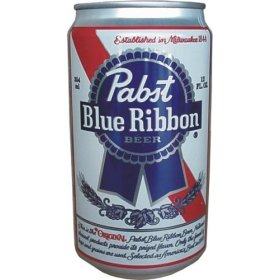I had a lot of interest in the last “Beer Myths” that I did, so I figured I would do another one. Since there are dozens of “myths” revolving around beer, I could (and just may) do many more of them. Again, if you know of one you would like to see on here, or would like looked into, by all means, drop me a comment, or an email, and I would love to take a look for you.
Enjoy…..
The people at Guinness estimate that in Great Britain alone, 92,749 liters of beer each year are lost in beer drinker’s moustaches and beards. They estimate that each pint (approx. ½ l) is raised 10 times, and each time, 0.56 ml is absorbed into the facial hair.
 Draft Beer is always better then bottled beer
Draft Beer is always better then bottled beer- Again, this is one of those “myths” that is mostly just preference. When someone asks me, or more often “tells” me this, I simply say “I would rather have a great beer out of a bottle, then a bad one on tap”. There are, however, a few aspects of this myth that we can look at. The original statement holds true for a majority of the beers sold in the states, that being ones from “the big 3”, Anheuser Busch, Coors, and Miller (actually, it’s really only 2, because Coors and Miller are now the same company). From the tap, these are often unpasteurized and “fresher” making them taste better. However, a lot of craft and Belgian beers are bottle conditioned. These beers are given an extra chance to “condition” in their own yeast longer, sometimes improving over several years.

One method of checking a beer's quality is the way in which the foam adheres to the side of the glass after each sip. Beer connoisseurs call this "Brussels lace."
 |
| The famous "Sam Adams" glass |
A glass's shape can affect the flavor of beer. I’ve had a lot of discussions with people about marketing gimmicks in beer advertising, (i.e. Vortex Bottles, frost brewed, cold filters, triple hops brewed etc that in reality, are either complete BS, or are not really unique, different or ever really understandable (does anyone know what they mean by “triple hops brewed” anyway? More on these gimmick to come later) however, the one that a lot people laugh at, is one that actually holds some truth, and is backed up my hundreds of years of tradition, and even modern day science. The glass DOES affect the taste. Most people wouldn’t dare drink wine from a Dixie up, or, god forbid, right out of the bottle right? Why is that? The wine glass is designed to promote various aspects of that particular varietal. The shape of the beer glass can promote head (foam) formation and retention, trap aromatics in the bulb of the glass, among many other things. I plan on writing more about glassware later.
 |
| Chimay Monk |
Historians report that during the middle Ages, when monks were brewing their beer in their monasteries, each monk was allowed to drink 5 quarts of beer a day.
“Bud, Miller and Coors are great American Beers”. Sadly, if you want to drink American beers, now Sam Adams is the largest American owned breweries. Bud, Miller and Coors (Miller Coors) are now as much American beers are Toyota is an American car. They are brewed here this is true, (they were founded here as well, Toyota was not, I know that) but have since been sold to large conglomerates that are not based here in America. One more reason to “buy American” and support your local breweries right!
Not a myth, just some interesting facts none the less. In 1900, there were 1,800 breweries in America. In 1980, there were 44. In 2007, there were 1,449 breweries. As of 2010 (the latest number available) there were 1,759 breweries.
AS of 2010 there were
1,033 brewpubs
603 microbrewers
80 Regional Craft Brewers
1716 total Craft Brewers
20 large, none craft breweries
23 listed as “other”
1,759 total breweries in America.
 |
| By far, this is the smartest thing you will ever see on this blog! |
The best beers have green bottles I’ve actually had people tell me “I’ll drink any beer that comes in a green bottle” Really? Why? Another myth that was started and circulated from and for imported beers. Brown glass is the best color to protect beer from light, which is why most beers are bottled with it. A shortage of brown glass in Europe during the last century led to many breweries using green glass to bottle their beer – therefore, green bottles represented imported beer for many years and people incorrectly assumed the color indicated a better beer. In fact, green glass is actually bad for beer. sunlight affects beer a lot, and as those of us in Arizona are well aware, it affects everything else on this planet except for pure evil. Left too long in light, beer can become "skunked," (Heineken anyone?). Skunked beer is the result of a molecule in hops — isohumulones — that breaks down in light, and the broken-down version of isohumulones resembles the stink molecule release by skunks. Glass bottles let in light; brown glass let in very little, cans let in none.
You can’t get a hangover from drinking organic beer If only being eco-friendly was this rewarding, Al Gore would be an alcoholic, and I would be driving a Prius!! This myth is based on the idea that organic beer is cleaner or purer than other beer, but there’s no existing proof that it manages to avoid giving hangovers when consumed in sufficient quantities. It’s not the impurities in the beer that cause the hang over anyway.
















